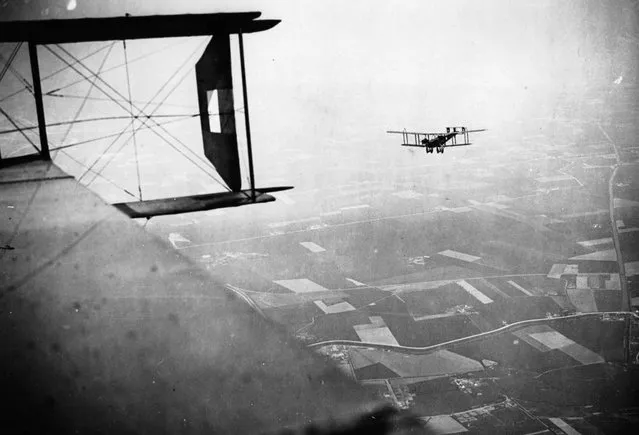
British Handley-Page bombers on a mission, Western Front, during World War I. This photograph, which appears to have been taken from the cabin of a Handley-Page bomber, is attributed to Tom Aitken. It shows another Handley-Page bomber setting out on a bombing mission. The model 0/400 bomber, which was introduced in 1918, could carry 2,000 lbs (907 kilos) of bombs and could be fitted with four Lewis machine-guns. (Photo by Tom Aitken/National Library of Scotland via The Atlantic)

A French SPAD S.XVI two-seat biplane reconnaissance aircraft, flying over Compeign Sector, France ca. 1918. Note the zig-zag patterns of defensive trenches in the fields below. (Photo by San Diego Air and Space Museum Archive via The Atlantic)
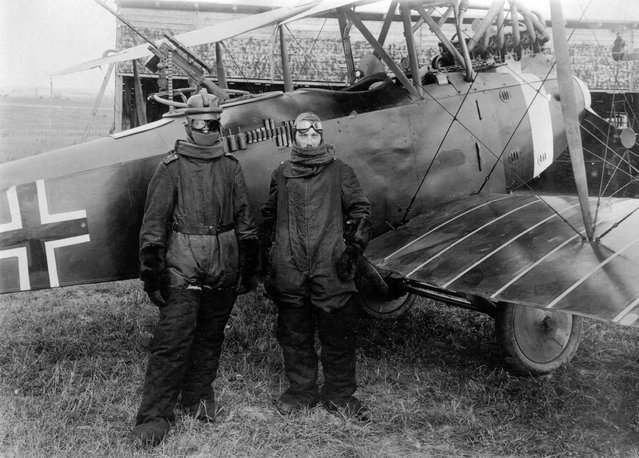
German pilot Richard Scholl and his co-pilot Lieutenant Anderer, in flight gear beside their Hannover CL.II biplane in 1918. (Photo by CC BY SA Carola Eugster via The Atlantic)

German soldiers attend to a stack of gas canisters attached to a manifold, inflating a captive balloon on the Western front. (Photo by National Archives/Official German Photograph via The Atlantic)
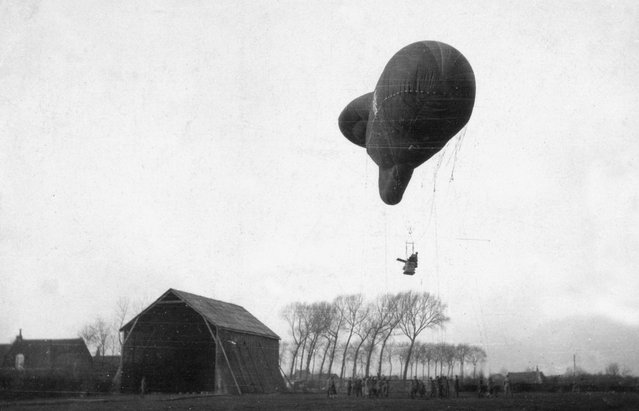
A German Type Ae 800 observation balloon ascending. (Photo by Brett Butterworth via The Atlantic)
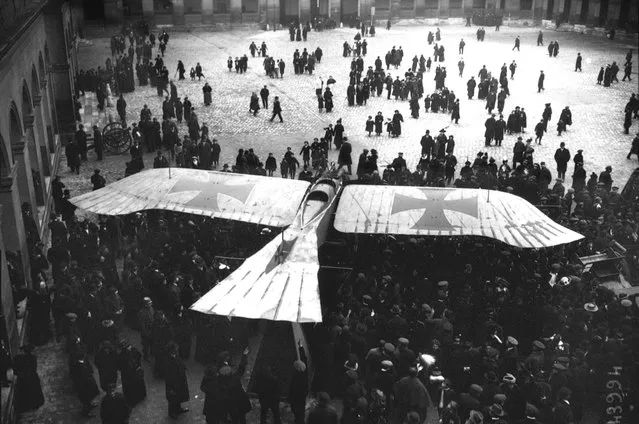
A captured German Taube monoplane, on display in the courtyard of Les Invalides in Paris, in 1915. The Taube was a pre-World War I aircraft, only briefly used on the front lines, replaced later by newer designs. (Photo by Bibliotheque nationale de France via The Atlantic)

Captain Ross-Smith (left) and Observer in front of a Modern Bristol Fighter, 1st Squadron A.F.C. Palestine, February 1918. This image was taken using the Paget process, an early experiment in color photography. (Photo by Frank Hurley/State Library of New South Wales via The Atlantic)
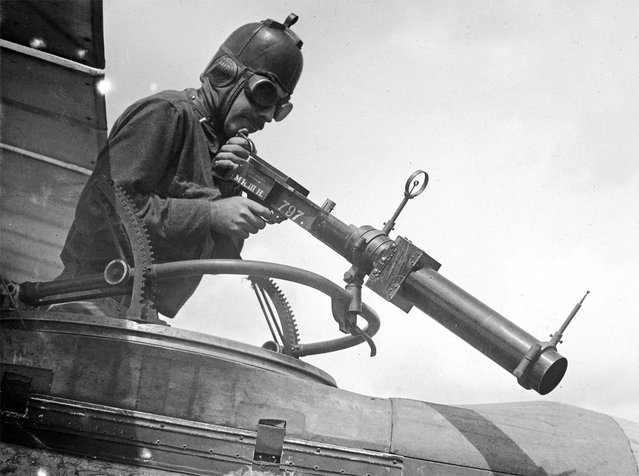
A soldier poses with a Hythe Mk III Gun Camera during training activities at Ellington Field, Houston, Texas in April of 1918. The Mk III, built to match the size, handling, and weight of a Lewis Gun, was used to train aerial gunners, recording a photograph when the trigger was pulled, for later review, when an instructor could coach trainees on better aiming strategies. (Photo by Harry Kidd/WWI Army Signal Corps Photograph Collection via The Atlantic)
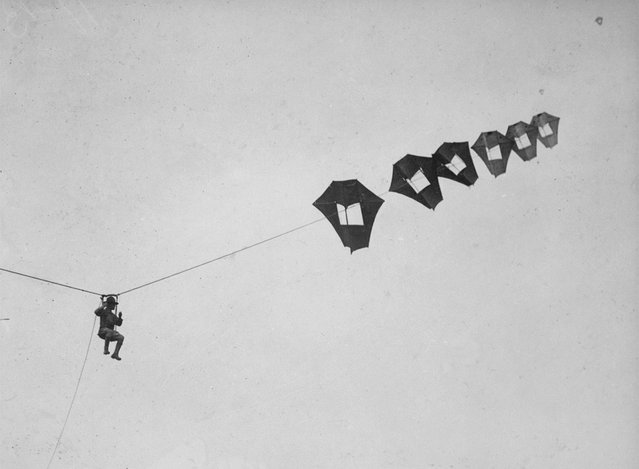
Lieutenant Kirk Booth of the U.S. Signal Corps being lifted skyward by the giant Perkins man-carrying kite at Camp Devens, Ayer, Massachusetts. While the United States never used these kites during the war, the German and French armies put some to use on the front lines. (Photo by U.S. National Archives via The Atlantic)
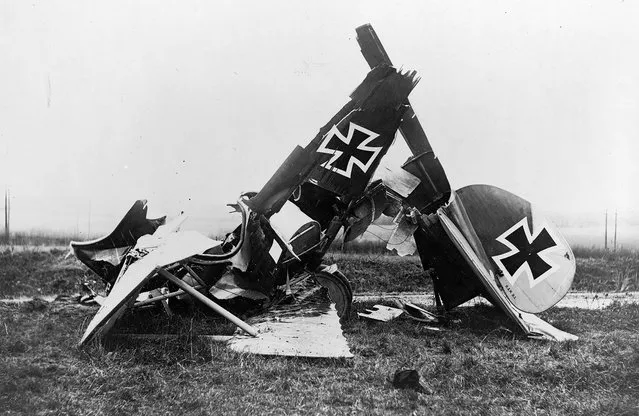
Wreckage of a German Albatross D. III fighter biplane. (Photo by Library of Congress via The Atlantic)
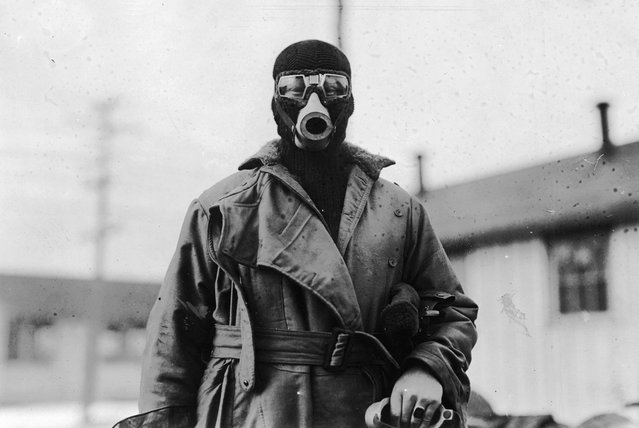
Unidentified pilot wearing a type of breathing apparatus. Image taken by O.I.C Photographic Detachment, Hazelhurst Field, Long Island, New York. (Photo by National World War I Museum, Kansas City, Missouri, USA via The Atlantic)
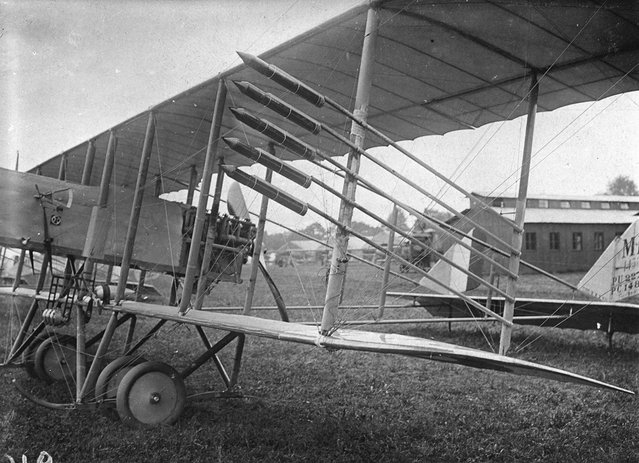
A Farman airplane with rockets attached to its struts. (Photo by National World War I Museum, Kansas City, Missouri, USA via The Atlantic)
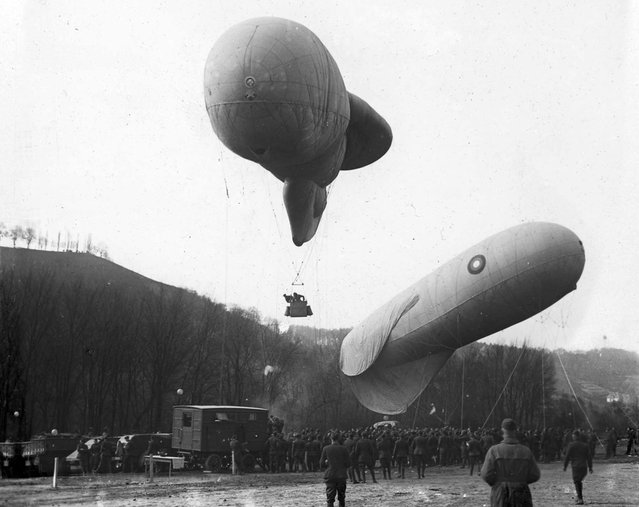
Observation Balloons near Coblenz, Germany. (Photo by Keystone View Company via The Atlantic)
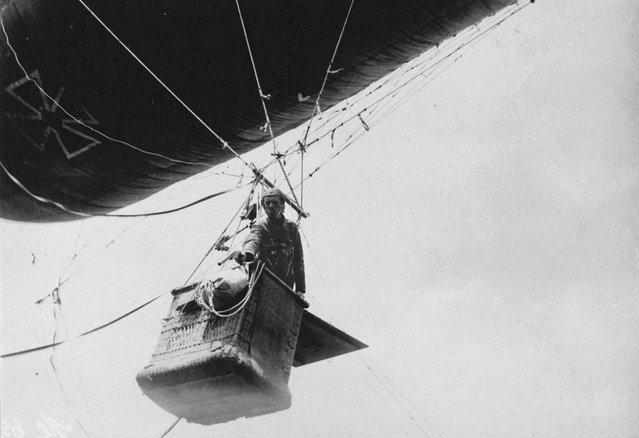
Observer in a German balloon gondola shoots off light signals with a pistol. (Photo by U.S. National Archives via The Atlantic)
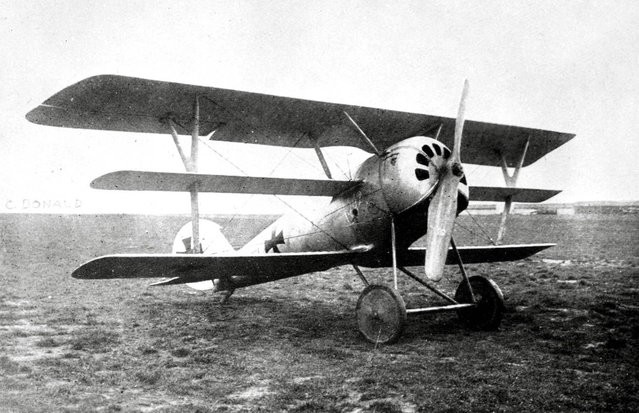
A German Pfalz Dr.I single-seat triplane fighter aircraft, ca. 1918. (Photo by San Diego Air and Space Museum Archive via The Atlantic)
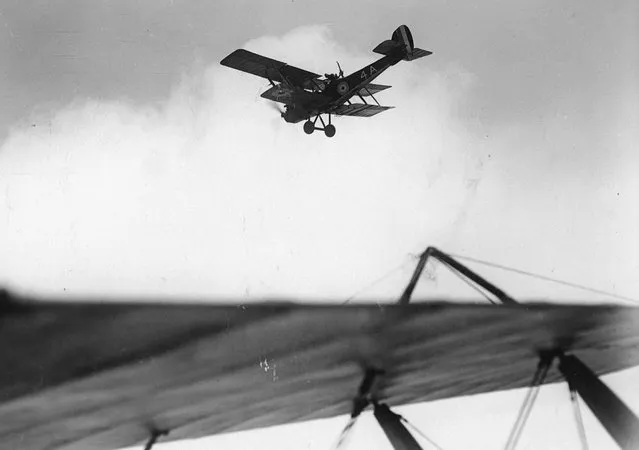
British reconnaissance plane flying over enemy lines, in France. (Photo by National Library of Scotland via The Atlantic)
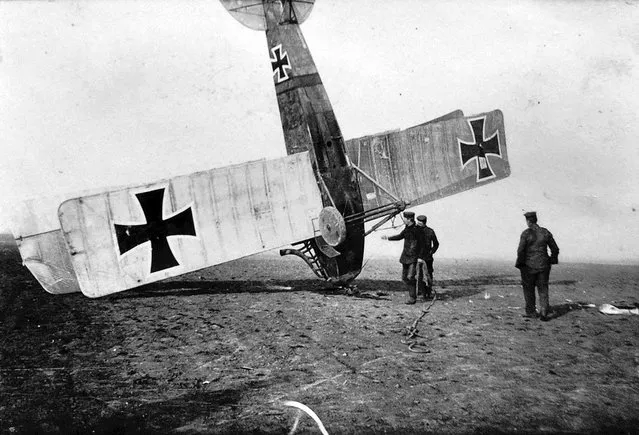
German soldiers attend to an upended German aircraft. (Photo by CC BY SA Carola Eugster via The Atlantic)
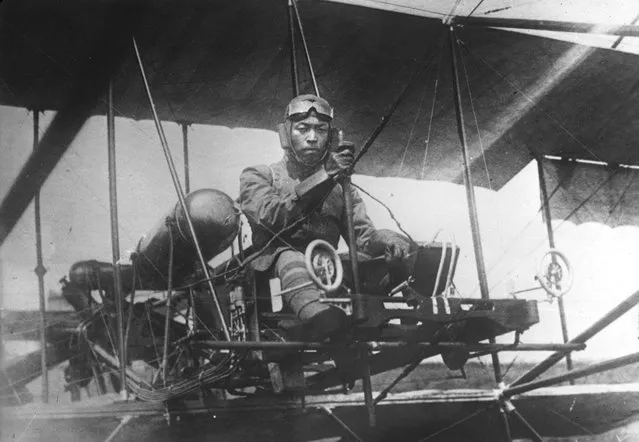
Japanese aviator, 1914. (Photo by Bibliotheque nationale de France via The Atlantic)
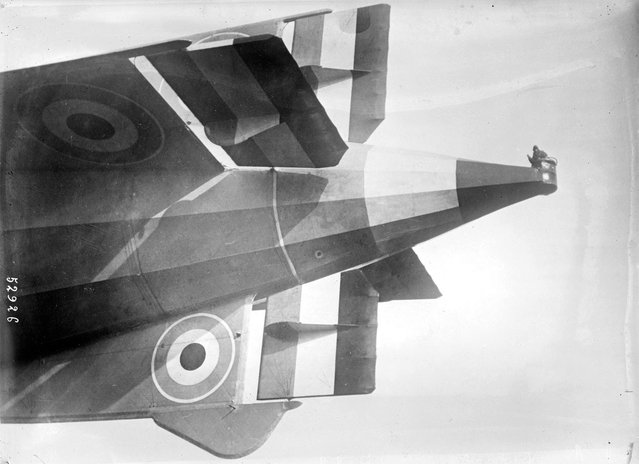
An observer in the tail tip of the English airship R33 on March 6, 1919 in Selby, England. (Photo by Bibliotheque nationale de France via The Atlantic)
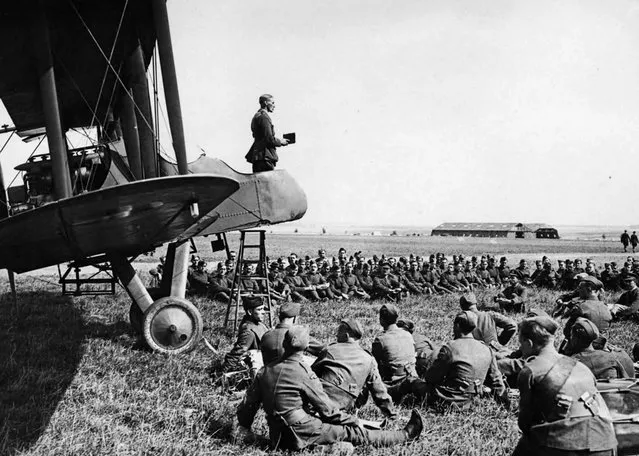
A Sunday morning service in an aerodrome in France. The Chaplain conducting the service from an aeroplane. (Photo by National Library of Scotland via The Atlantic)
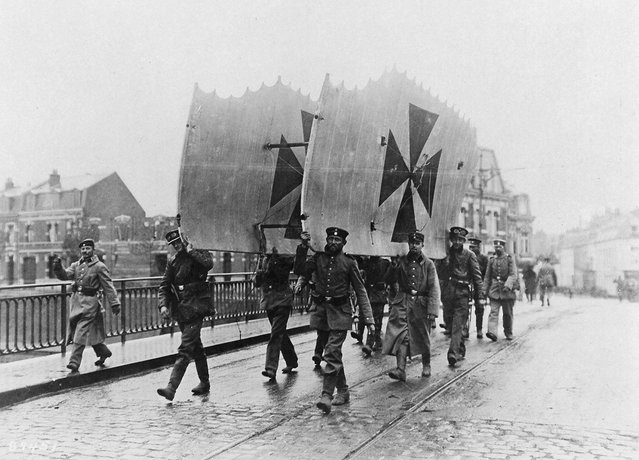
Soldiers carry a set of German airplane wings. (Photo by National Archives via The Atlantic)
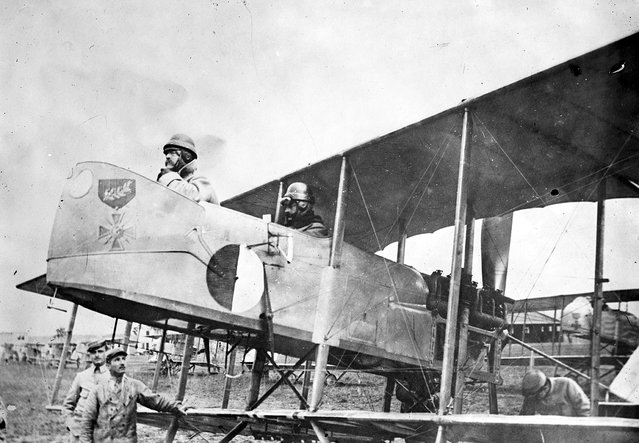
Captain Maurice Happe, rear seat, commander of French squadron MF 29, seated in his Farman MF.11 Shorthorn bomber with a Captain Berthaut. The plane bears the insignia of the first unit, a Croix de Guerre, ca. 1915. (Photo by Library of Congress via The Atlantic)
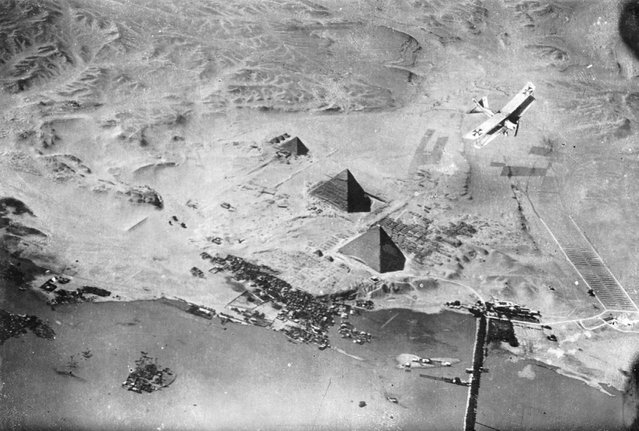
A German airplane over the Pyramids of Giza in Egypt. (Photo by Der Weltkrieg im Bild/Upper Austrian Federal State Library via The Atlantic)
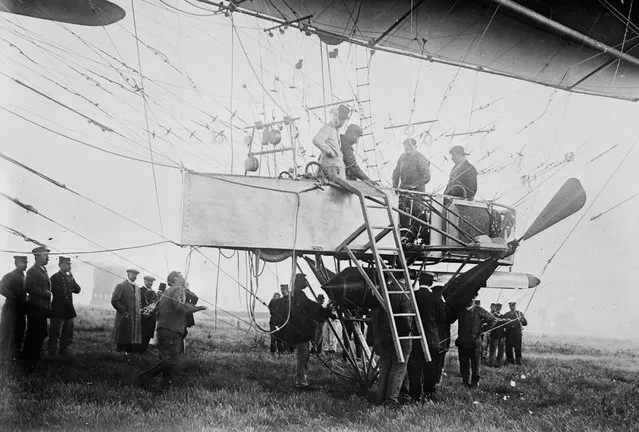
Car of French Military Dirigible “Republique”. (Photo by Library of Congress via The Atlantic)
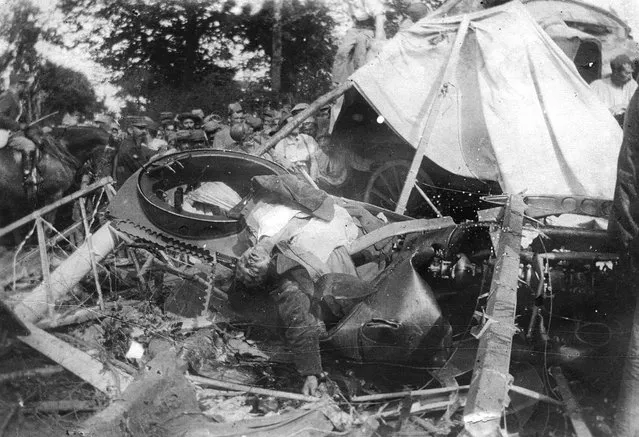
A German pilot lies dead in his crashed airplane in France, in 1918. (Photo by National World War I Museum, Kansas City, Missouri, USA via The Atlantic)

A German Pfalz E.I prepares to land, April 1916. (Photo by Brett Butterworth via The Atlantic)
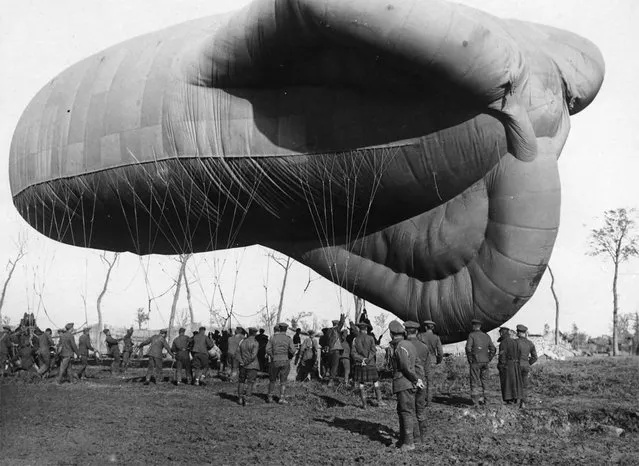
A returning observation balloon. A small army of men, dwarfed by the balloon, are controlling its descent with a multitude of ropes. The basket attached to the balloon, with space for two people, can be seen sitting on the ground. Frequently a target for gunfire, those conducting observations in these balloons were required to wear parachutes for a swift descent if necessary. (Photo by National Library of Scotland via The Atlantic)
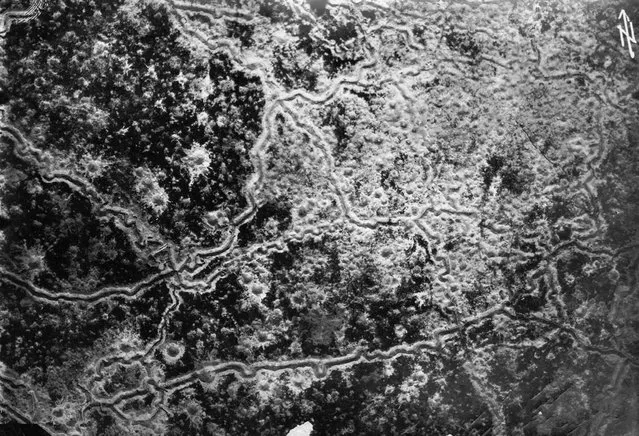
Aerial reconnaissance photograph showing a landscape scarred by trench lines and artillery craters. Photograph by pilot Richard Scholl and his co-pilot Lieutenant Anderer near Guignicourt, northern France, August 8, 1918. One month later, Richard Scholl was reported missing. (Photo by CC BY SA Carola Eugster via The Atlantic)
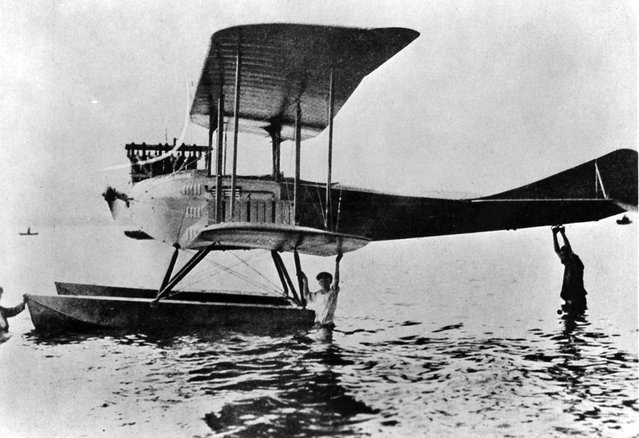
German hydroplane, ca. 1918. (Photo by U.S. National Archives via The Atlantic)
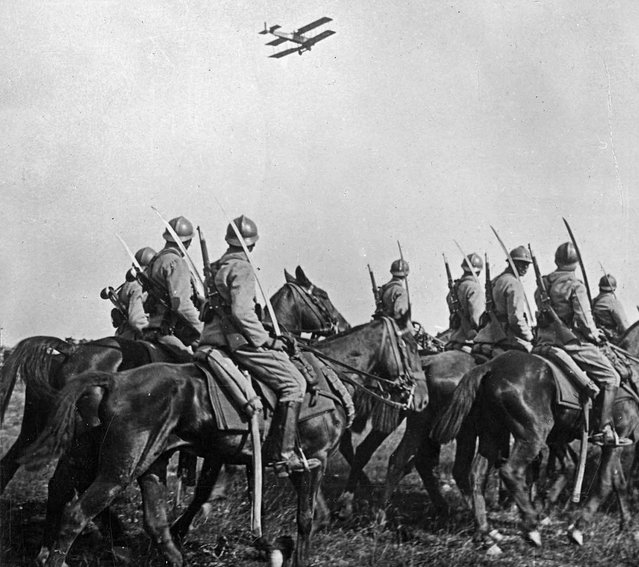
French Cavalry observe an Army airplane fly past. (Photo by Keystone View Company via The Atlantic)
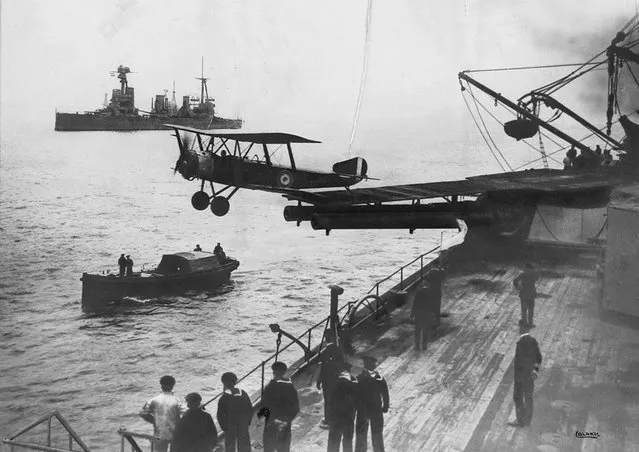
A Sopwith 1 1/2 Strutter biplane aircraft taking off from a platform built on top of HMAS Australia's midships “Q” turret, in 1918. (Photo by State Library of New South Wales via The Atlantic)
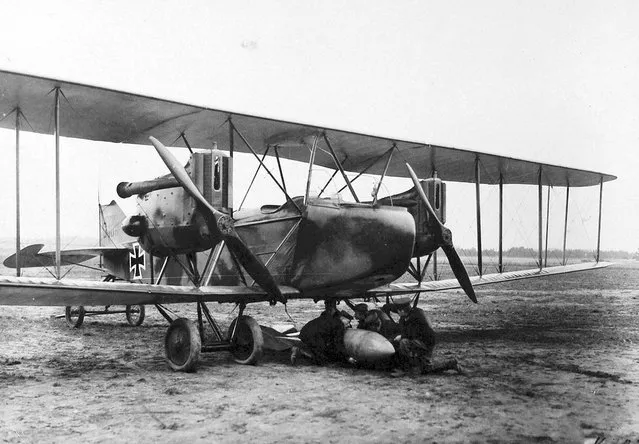
Attaching a 100 kg bomb to a German airplane. (Photo by National Archives/Official German Photograph via The Atlantic)

An aerial photographer with a Graflex camera, ca. 1917-18. (Photo by U.S. Army via The Atlantic)
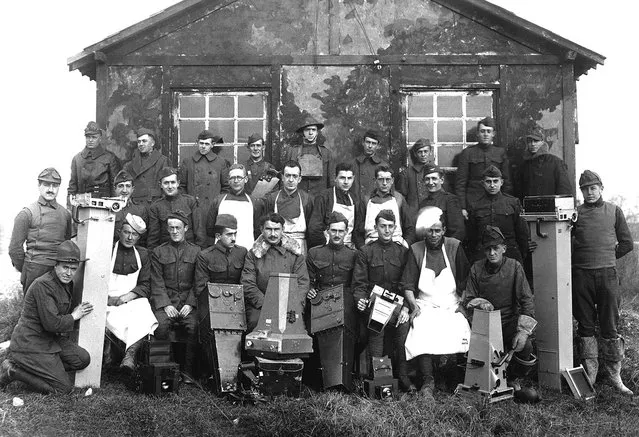
14th Photo Section, 1st Army, “The Balloonatic Section”. Capt. A. W. Stevens (center, front row) and personnel. Ca. 1918. Air Service Photographic Section. (Photo by Army Air Forces via The Atlantic)
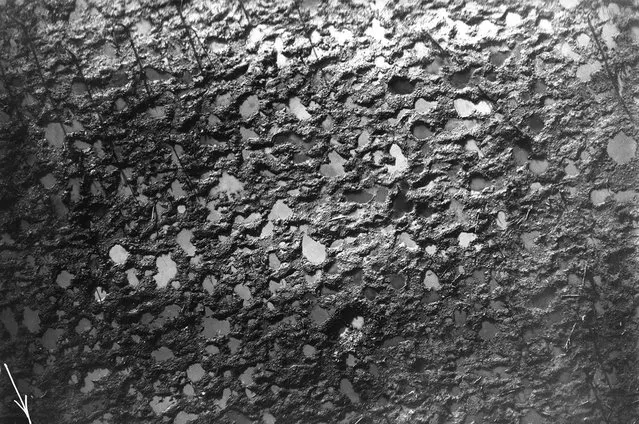
Aerial photo of a cratered battlefield. The dark diagonal lines are the shadows of the few remaining tree trunks. (Photo by National World War I Museum, Kansas City, Missouri, USA via The Atlantic)
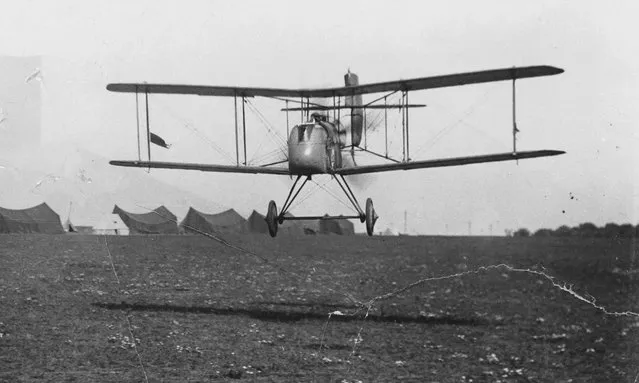
A British Commander starting off on a raid, flying an Airco DH.2 biplane. (Photo by Nationaal Archief via The Atlantic)
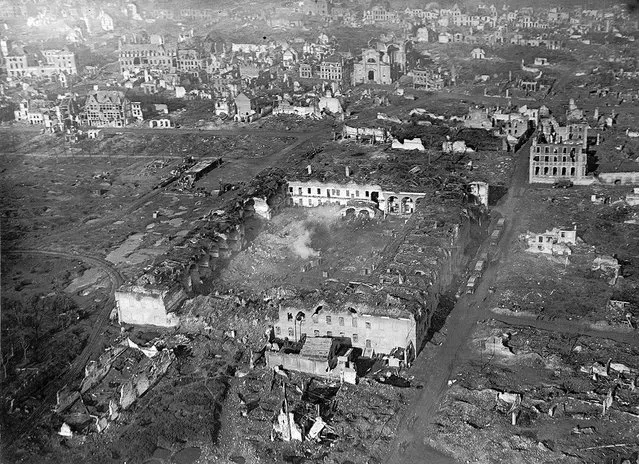
The bombarded barracks at Ypres, viewed from 500 ft. (Photo by Australian official photographs/State Library of New South Wales via The Atlantic)
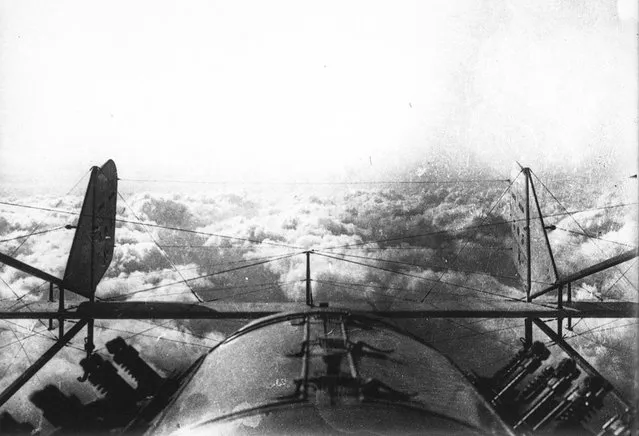
Returning from a reconnaissance flight during World War I, a view of the clouds from above. (Photo by Bibliotheque nationale de France via The Atlantic)
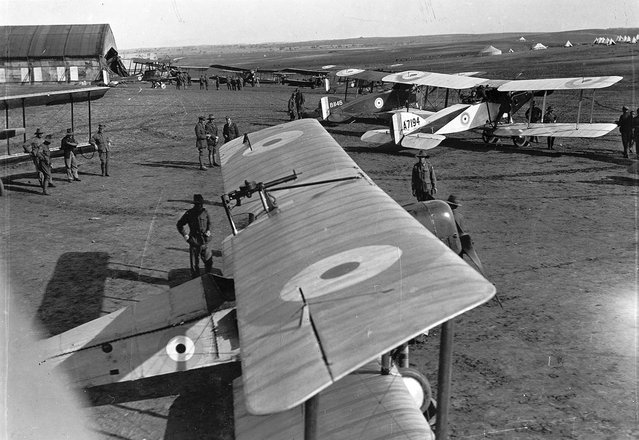
No. 1 Squadron, a unit of the Australian Flying Corps, in Palestine in 1918. (Photo by James Francis Hurley/State Library of New South Wales via The Atlantic)
27 May 2014 10:48:00,
post received
0 comments
